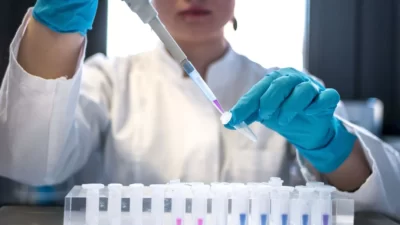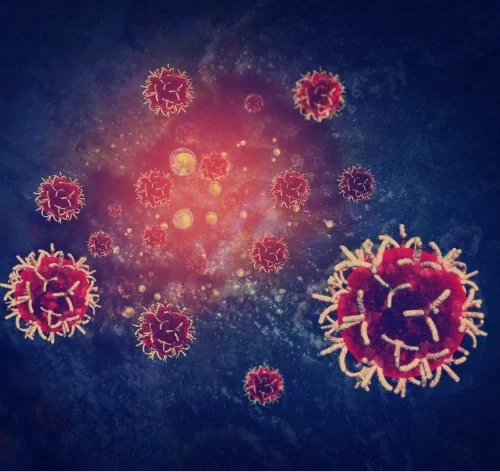Antineo: Melanoma Tumour model – Braf
▪ Braf cells
Mouse Braf cells were isolated from a BRAFV600E mutated melanoma. BRAF is mutated in 50%–70% of human melanomas, and we have developed a mouse model of melanoma that is driven by BrafV600E, the most common BRAF mutant found in the human disease. This model is relevant because it is driven by the most important human oncogene expressed at physiological levels.
▪ Tumour growth in vivo
The cells were collected from a tissue culture flask and injected subcutaneously in the right flank of C57/Bl6 mice. The resulting tumours were monitored by measuring two diameters with calipers, and extrapolating the volume to a sphere.
The mice bearing Braf tumours can be treated by intra-peritoneal, intra-venous, intra-tumoral or subcutaneous injection of the compounds. Per os administration is also possible.
Figure 1: (view PDF)
Tumour growth curve of the Braf WT cells as subcutaneous tumors, Mean ± SEM (n=6)
-
Development of the anti-PD1 & anti-PD-L1 resistant models
The resistant Braf model was developed in vivo from the parental Braf WT model, without genetic modifications. Braf cells have been treated intraperitoneally once a week with 12,5 mg/kg of anti-PD1 or anti-PD-L1.
Figure 2: (view PDF)
From D10 tumor volume was significantly reduced (at D10 pvalue= 0.0022, at D13 pvalue=0.0043, at D17 pvalue =0.0022 and at D20 pvalue = 0.0022) for the anti-PD1 and for the anti-PD-L1 treated groups compared to control group.
-
Usage of the anti-PD1 resistant model
Due to its peculiar nature of resistant model developed in vivo, the PD1R model can only be implanted surgically as tumour fragments, and cannot be used for in vitro experiment. Braf PD1R model has been treated intraperitoneally once a week with anti-PD1.
Figure 3: (view PDF)
Effect of anti-PD1 treatment at 12.5mg/kg on Braf PD1R tumour growth, Mean ± SEM (n=6)
Both studies showed that the group treated with anti-PD1 a weak response to the ICI compared to the non-resistant model.
-
Usage of the anti-PD-L1 resistant model
Due to its peculiar nature of resistant model developed in vivo, the PD-L1R model can only be implanted surgically as tumour fragments, and cannot be used for in vitro experiment. Braf PD-L1R model has been treated intraperitoneally once a week with anti-PD-L1.
Figure 4: (view PDF)
Effect of anti-PD-L1 treatment at 12.5mg/kg on Braf PD-L1R tumour growth, Mean ± SEM (n=6)

 Antineo
Antineo Preclinical services
Preclinical services Tumour models
Tumour models Our Strengths
Our Strengths News & Events
News & Events